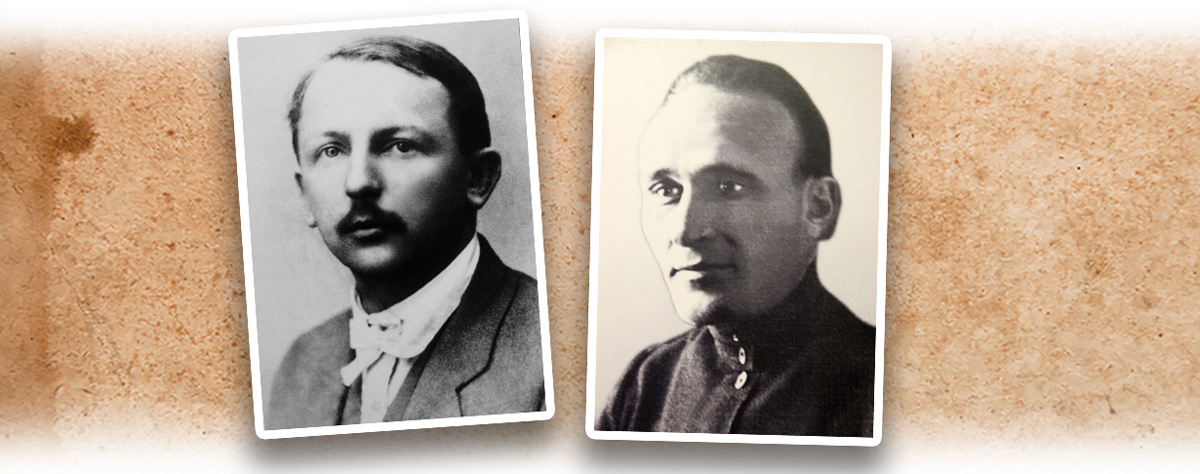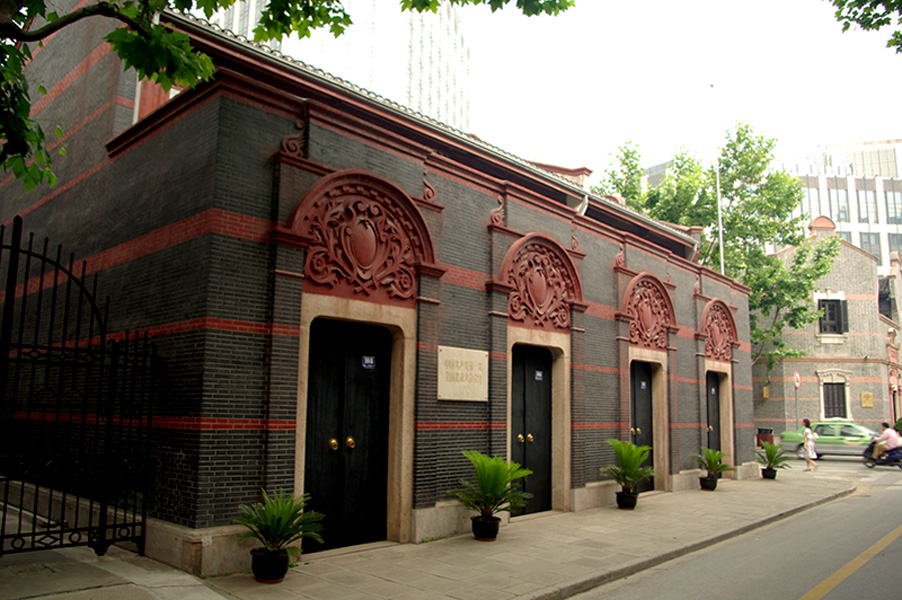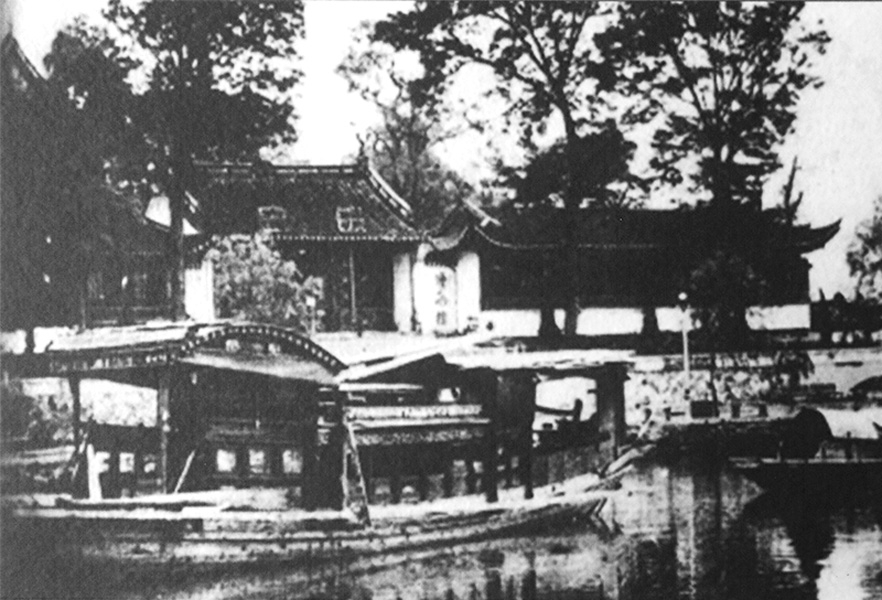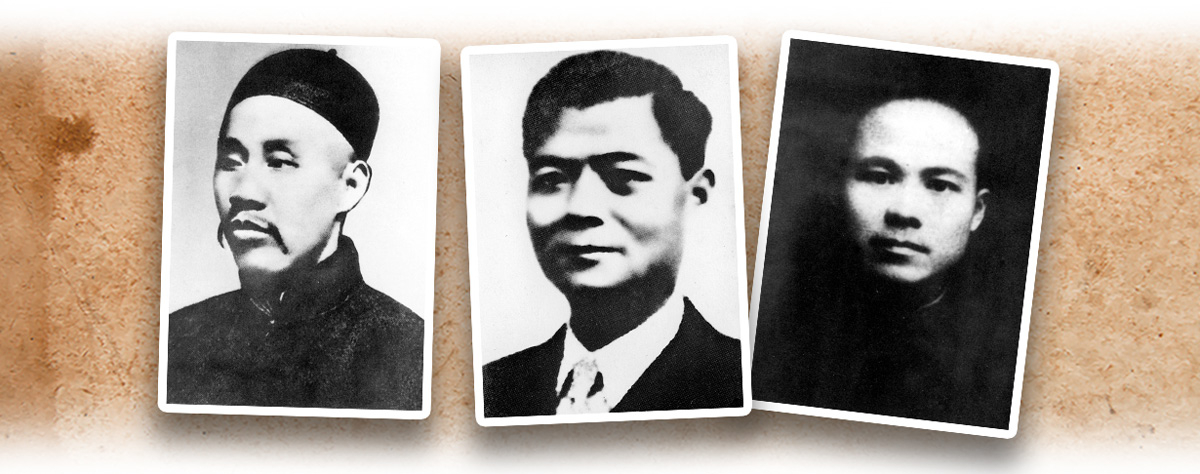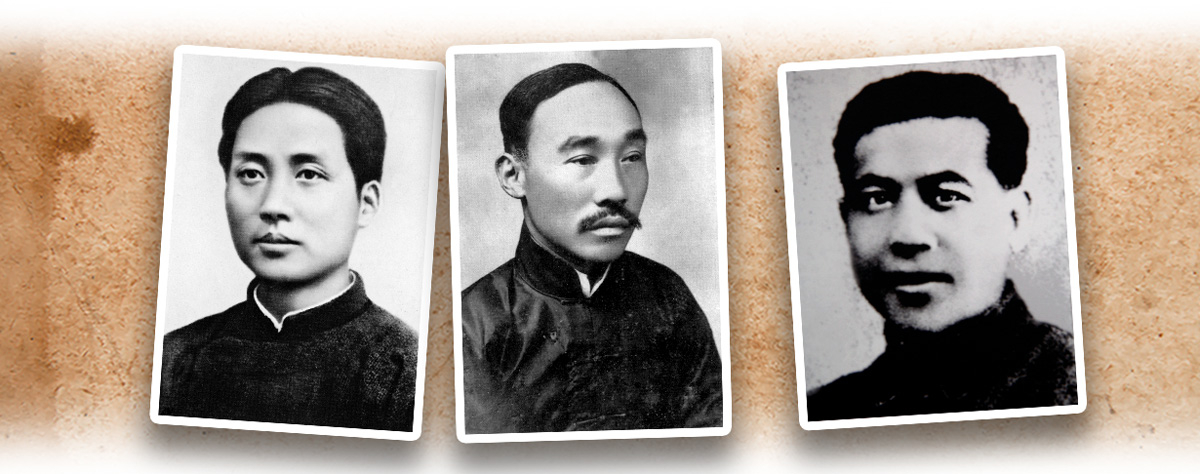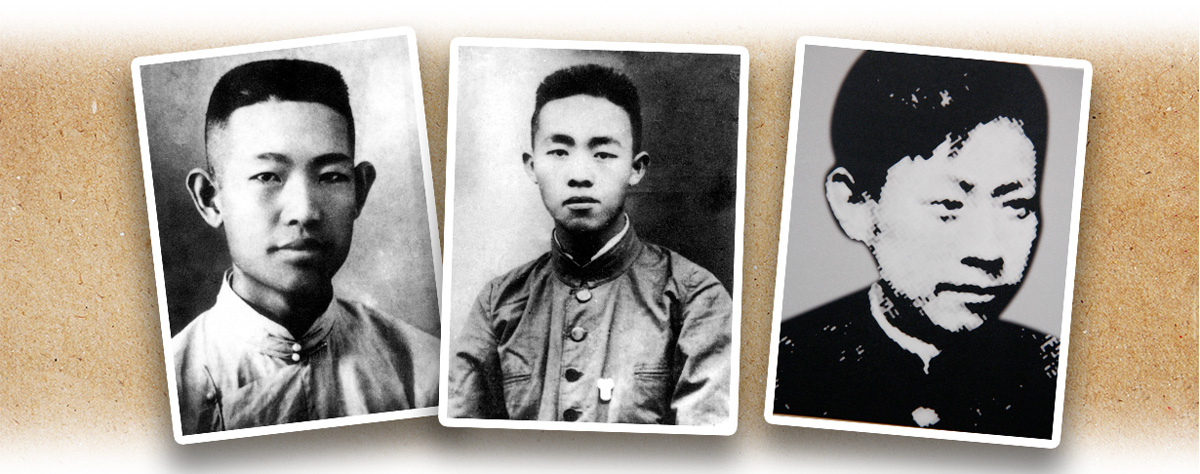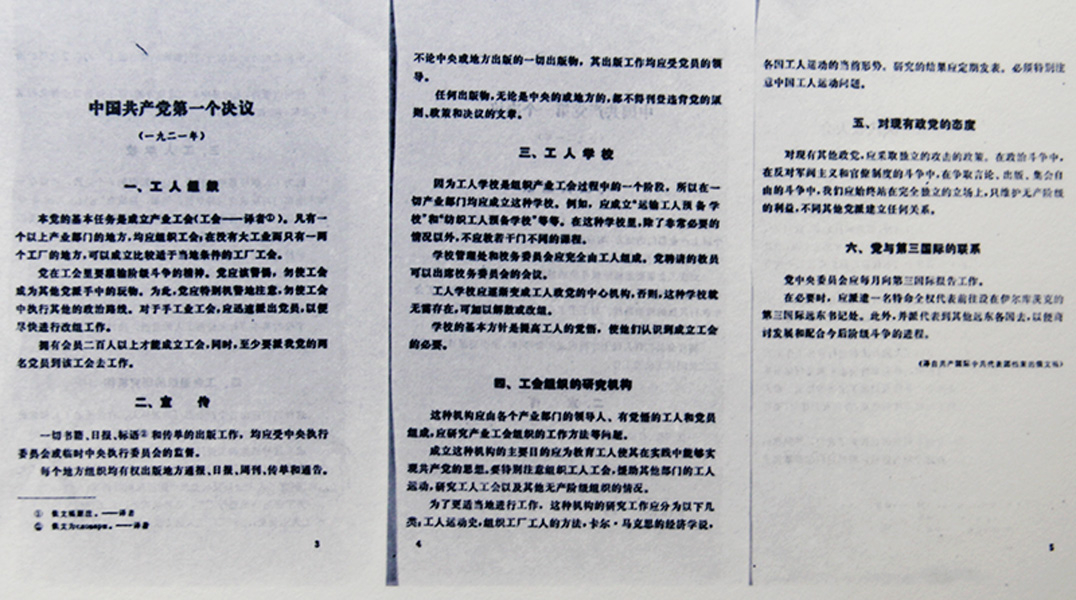The early communist cells formed in Shanghai (上海) and other regions in China laid the foundation for the official establishment of the Chinese Communist Party (CCP, 中國共產黨). Some believed that 1920 was the founding year of the CCP, yet 1921 was when it emerged as a national party.
In June 1921, the Communist International (also known as Comintern) sent Hendricus Josephus Franciscus Marie Sneevliet (alias Maring or Ma Lin), Vladimir Nikolsky, and other delegates to China to aid their Chinese comrades in founding a party. On 23 July 1921, the Comintern delegates met with 13 people representing the 50-odd communist members nationwide: Li Da (李達) and Li Hanjun (李漢俊) of Shanghai; Zhang Guotao (張國燾) and Liu Renjing (劉仁靜) of Beijing (北京); Dong Biwu (董必武), Chen Tanqiu (陳潭秋), and Bao Huiseng (包惠僧, who attended as proxy representative of Chen Duxiu ﹝陳獨秀﹞of Guangzhou ﹝廣州﹞) of Wuhan (武漢); Mao Zedong (毛澤東) and He Shuheng (何叔衡) of Changsha (長沙); Wang Jinmei (王盡美) and Deng Enming (鄧恩銘) of Ji’nan (濟南); Chen Gongbo (陳公博) of Guangzhou and Zhou Fohai (周佛海) of the overseas Chinese students’ cell in Japan.
The First National Congress of the Chinese Communist Party was initially held inside a building at the French Concession area of Shanghai (No. 106 Wangzhi Road﹝望志路﹞). It was later moved to a tour boat on South Lake (南湖) in Jiaxing (嘉興) due to harassment from the French Concession police. On the boat, the delegates passed the party’s first programme (the documentation was originally in Russian and subsequently translated to Chinese; also known as The First Programme of the Chinese Communist Party in English) and first decision, which established the CCP’s role as a political party of the proletariat fighting for achieving socialism and communism.
The Congress also elected the Central Committee, the party’s leadership, with Chen Duxiu (in absentia) as the Secretary (later called the Chairman of the Central Executive Committee and the General Secretary of the Central Committee), Zhang Guotao as the Director of Organisation, and Li Da as the Director of Propaganda. The CCP was thus officially founded.
|
|
Why was 1 July designated as the anniversary of the founding of the CCP? On a different note, why was the Comintern commonly referred to as the “Third International?” |
|
|
See answer below. |
From left to right: Maring and Nikolsky. The duo was sent by the Comintern to China in 1921 to help form the CCP. Both attended the founding congress of the CCP and Maring chaired it.
On 23 July 1921, the founding congress of the CCP was held at No. 106 Wangzhi Road in the French Concession of Shanghai. Pictured is a modern-day photo of the venue.
By the end of July 1921, the French Concession police searched the original site of the congress. The participants decided to continue the congress on a tour boat on the South Lake in Jiaxing.
Wax sculptures re-enacting the scene of the First National Congress of the Chinese Communist Party. The speaker in blue is Mao Zedong.
Four of the representatives of the CCP’s founding congress. From the left: Li Da and Li Hanjun of Shanghai; Zhang Guotao and Liu Renjing of Beijing.
Three of the representatives of the CCP’s founding congress. From the left: Dong Biwu, Chen Tanqiu and Bao Huiseng of Wuhan. Bao attended as proxy representative of Chen Duxiu, who was in Guangzhou at that time. Chen Duxiu was elected Secretary in absentia and became the first leader of the CCP.
Three of the representatives of the CCP’s founding congress. From the left: Mao Zedong and He Shuheng of Changsha; Chen Gongbo of Guangzhou.
Three of the representatives of the CCP’s founding congress. From the left: Wang Jinmei and Deng Enming of Ji’nan; Zhou Fohai from the overseas students’ cell in Japan.
The First Programme of the Chinese Communist Party passed by the First National Congress of the Chinese Communist Party in 1921. It affirmed the party’s mission as carrying out proletariat revolution and creating a dictatorship of the proletariat, and finally realising its goal of communism.
The First Decision as to the Objects of the Chinese Communist Party passed by the First National Congress of the Chinese Communist Party in 1921. It primarily focuses on spearheading labour movements and launching propaganda projects.
|
|
Why was 1 July designated as the anniversary of the founding of the CCP? On a different note, why was the Comintern commonly referred to as the “Third International?” |
|
|
While the First National Congress of the Chinese Communist Party was held in July 1921, the meeting period were difficult to be recalled and traced due to the loss of documentation during wartime. Thus, the CCP’s Central Committee proclaimed at the party’s 20th anniversary held in Yan’an (延安) in June 1941 that 1 July to be the anniversary of the party’s establishment, and it has continued to this day. It wasn’t until the founding of the People’s Republic of China that the period was discovered to be from 23 to 31 July (some believe 20 July to be the opening date). On a different note, the Comintern is commonly known as the “Third International” for being the third in a series of international organisations with similar ideologies: the “First International (1864-76)” being the “International Workingmen’s Association (IWA)” of which Karl Marx participated in the founding, and the “Second International (1889-1916)” being the “Socialist International” Friedrich Engels facilitated founding. The “Communist International” founded by Lenin is thus known as the “Third International (1919-43)”. |
Source of most photos used in this feature piece: Fotoe





